The Mercedes-Benz Vision V doesn’t just raise the bar for luxury cars—it shatters it completely. Imagine sinking into a zero-gravity seat while 42 speakers wrap you in a private concert, or watching the roof glow with constellations as the car drives itself. This isn’t science fiction; it’s Mercedes’ radical vision for the future. Forget everything you know about high-end limousines.
The Vision V is longer than a Rolls-Royce Phantom, packed with sustainable materials, and loaded with tech so advanced it feels alive. Those scalelike flaps on the rear? They actually "breathe" and respond to their surroundings. The interior? A chameleon-like space that morphs from a mobile office to a cinema lounge at your whim.
We’re here to nibble at the seven features that helped this vehicle rewrite the rules of luxury. From an AI that anticipates your needs to doors that open like a spaceship’s, this is what happens when a car becomes an experience.
See also:
Mercedes-Benz's Connected Wallbox for Home Charging Now Available in the US
Design Language Inspired By The Avatar Movie
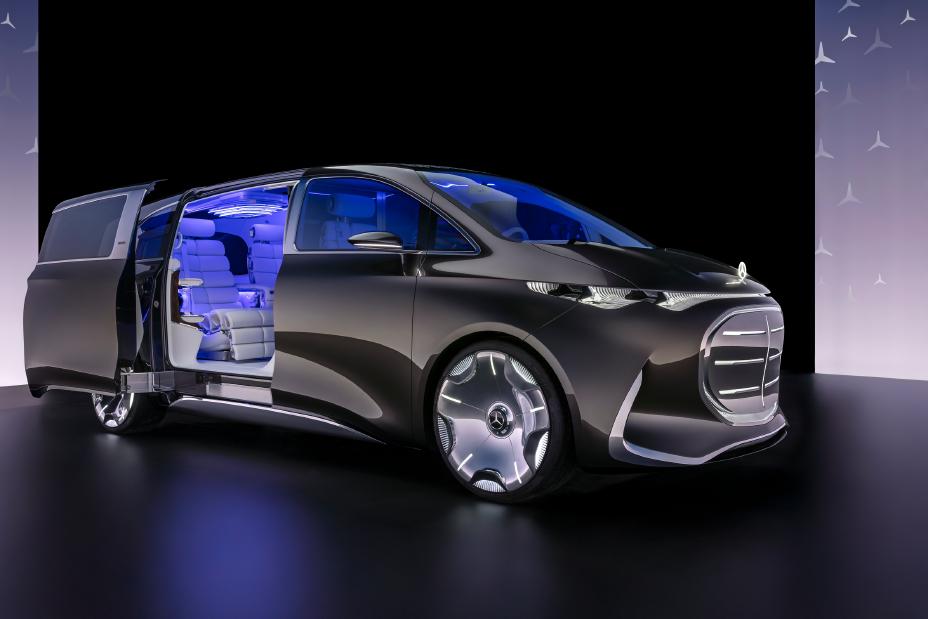
The Mercedes-Benz Vision AVTR (Advanced Vehicle Transformation) concept—often referred to as the "Vision V" in some discussions—features a distinct design language inspired by the movie Avatar and Mercedes-Benz’s futuristic vision.
Thus, the Vision V design philosophy emphasizes harmony between humans, machines, and nature. This design language is called "One Bow", characterized by:
- A single, sweeping curve from front to rear, eliminating traditional separations between hood, cabin, and rear.
- Organic, biomimetic shapes resembling natural forms (like the flow of wind or water).
- Sustainable materials (such as vegan leather and recycled plastics) to align with an eco-conscious ethos.
- Interactive elements, like the 33 "bionic flaps" on the rear that mimic scales and communicate with the surroundings.
Longer Than A Rolls-Royce Phantom
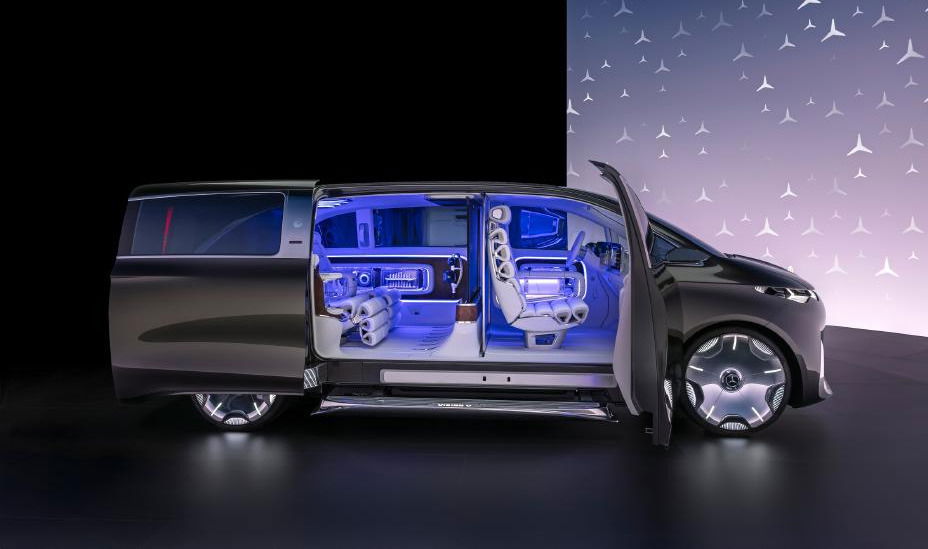
The Vision V’s stretched wheelbase merges SUV robustness with limousine grandeur. Its 3.5-meter wheelbase (longer than a Rolls-Royce Phantom) enables a spa-like rear cabin: twin executive seats with massage/zero-gravity recline, a starlight headliner, and a retractable minibar.
The design prioritizes silent mobility, as its active noise cancellation and acoustic glass isolate occupants. Structural innovation includes a carbon-fiber-reinforced frame for lightness without rigidity trade-offs. Rear-hinged coach doors and an elevated roofline ease entry, while predictive air suspension adjusts for seamless comfort.
Vision V Will Debut Mercedes-Benz's VAN.EA Architecture
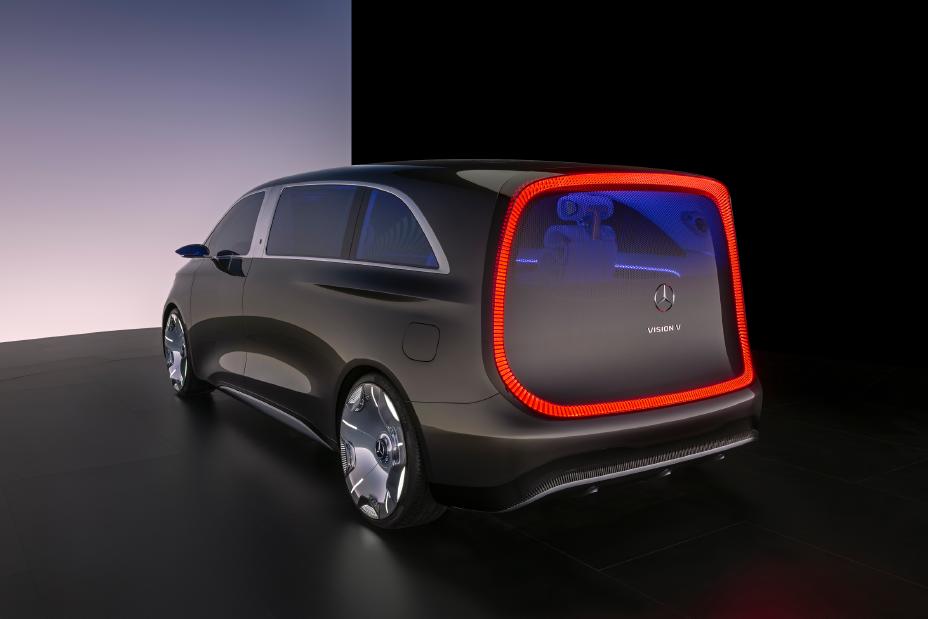
Mercedes-Benz's VAN.EA platform, launching in 2026, marks a transformative leap in electric vans, focusing on flexibility, efficiency, and sustainability. Designed for commercial and private use, VAN.EA will underpin next-gen eSprinter and eVito models, offering modular battery options (approximately 250 miles of range) and advanced 800V architecture for rapid charging.
The platform integrates MB.OS for seamless connectivity, autonomous driving readiness, and over-the-air updates. Production will span Europe, the U.S., and China, emphasizing carbon-neutral manufacturing.
Private Lounge With 42-Speaker Sound System
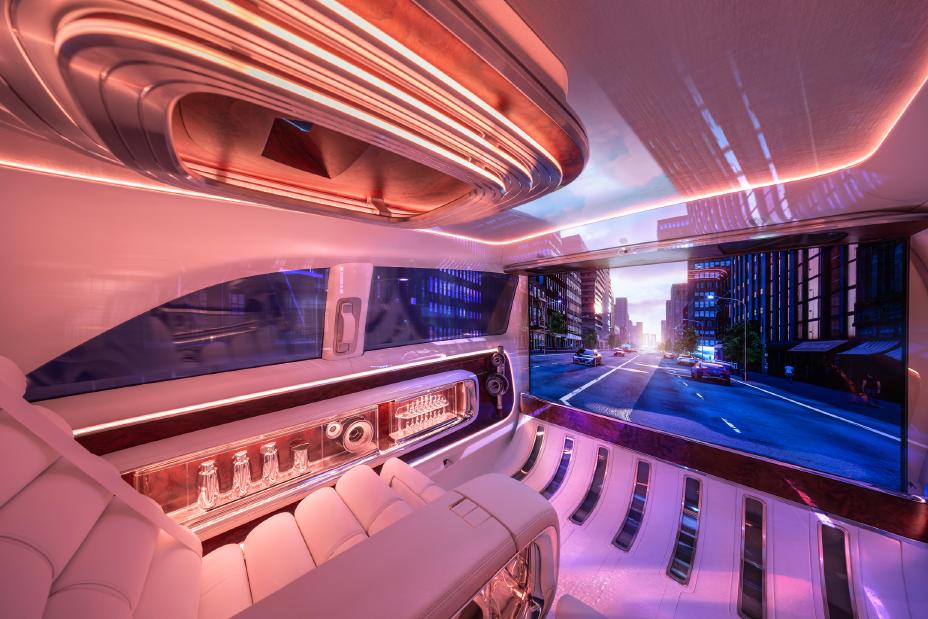
The Vision V introduces an open, lounge-inspired interior, featuring a retractable 65-inch cinema screen, 42-speaker surround sound, and seven projectors, creating an immersive digital experience. The spacious, lounge-inspired interior ensures comfort with a switchable glass partition for privacy. A large portal door and illuminated running board provide effortless access.
Interior Like Maybach
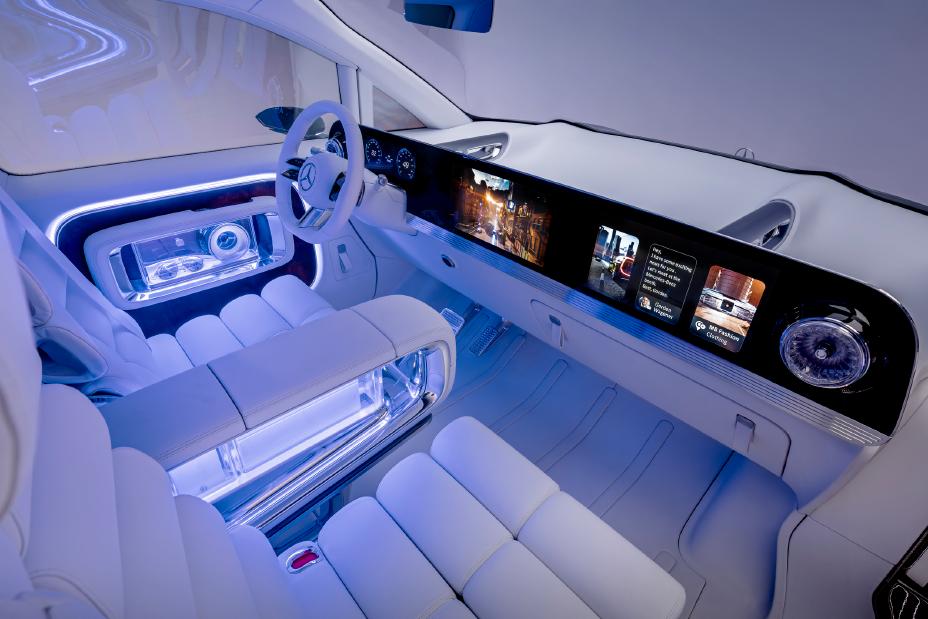
The Mercedes-Benz Vision V’s lounge-inspired cabin features four rotating executive seats wrapped in sustainable vegan leather. A panoramic glass roof with dynamic mood lighting mimics daylight cycles, while hidden projectors transform surfaces into interactive displays. The floating center console houses a crystal control unit, and zero-gravity recliners offer massage functions.
The MBUX Hyperscreen spans the dashboard, with AI-powered voice control anticipating passenger needs. Sustainable materials like bamboo fiber trim and recycled steel accents underscore Mercedes’ eco-conscious vision. This space blends Maybach-level opulence with cutting-edge tech, previewing the future of electric limousine travel.
See also:
Advantages Of Axial Flux Electric Motor: Mercedes-Benz Unveils Vision One-Eleven Concept Car
Ultra-Holistic Approach To Luxury Travel
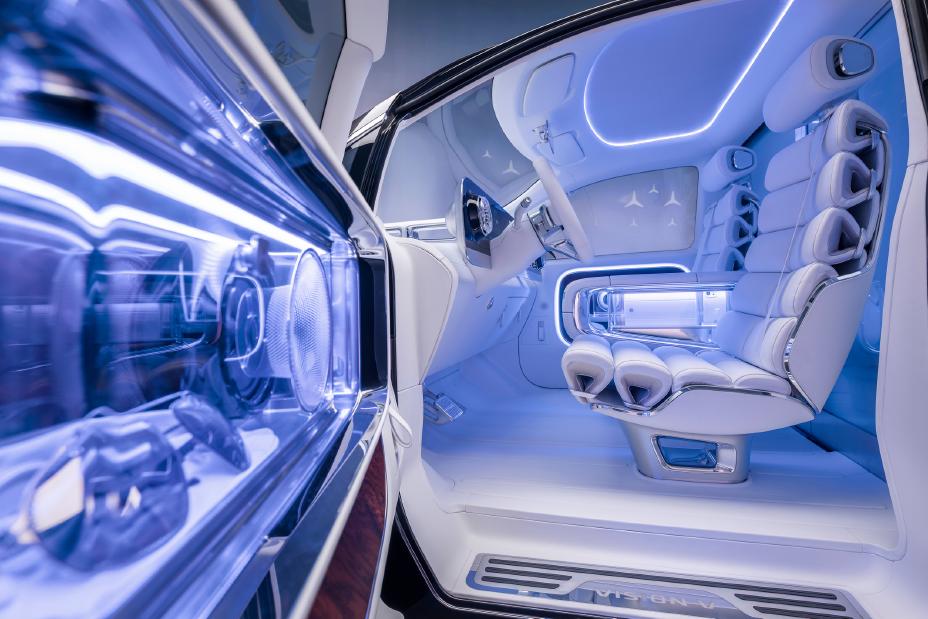
The Mercedes-Benz’s Vision V concept introduces seven interactive worlds of experience, designed to redefine luxury limousine travel by immersing passengers in a multisensory journey. Each “world” (Entertainment, Relax, Gaming, Work, Shopping, Discovery, Karaoke) blends cutting-edge technology with bespoke comfort, creating seamless transitions between relaxation, productivity, and entertainment.
The cabin transforms dynamically, adapting lighting, sound, and ambiance to evoke different moods—from serene tranquility to vibrant energy. Advanced AI anticipates passenger needs, offering personalized content, climate control, and even scent profiles. Interactive surfaces respond to touch and gesture, while augmented reality windows overlay digital information onto the passing landscape.
The worlds are designed to harmonize, allowing occupants to shift between social engagement and private retreat effortlessly. Materials are sustainably crafted, merging opulence with eco-conscious innovation. This holistic approach turns the vehicle into a mobile sanctuary, where every detail—from soundscapes to seat ergonomics—curates an unparalleled experience.
The Mercedes-Benz Vision V Rivals
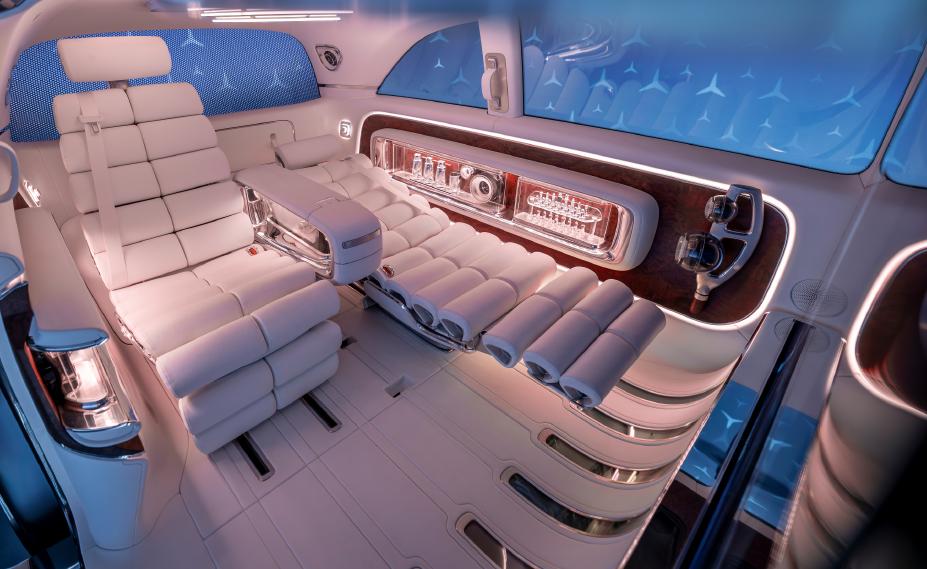
Mercedes-Benz’s Vision V enters a competitive space dominated by brands like Rolls-Royce, Bentley, and emerging electric luxury rivals such as Lucid Motors. Rolls-Royce, with its Phantom and Spectre EV, epitomizes timeless opulence, relying on handcrafted interiors and heritage appeal, whereas Mercedes focuses on futuristic tech and adaptive experiences.
Bentley’s Flying Spur offers a blend of performance and luxury but lacks the Vision V’s AI-driven interactivity. Lucid’s Air Sapphire challenges with cutting-edge EV performance but doesn’t match Mercedes’ limousine-centric luxury or immersive environments. Tesla’s Cybertruck and BMW’s i7 bring innovation but skew toward minimalism or traditional luxury, missing the Vision V’s holistic sensory approach.
Chinese automakers like Hongqi and NIO are rising with high-tech luxury sedans but lack global brand prestige. The Vision V differentiates itself by merging autonomous-ready tech, customizable experiential worlds, and sustainable materials, setting a new benchmark for next-gen luxury mobility.